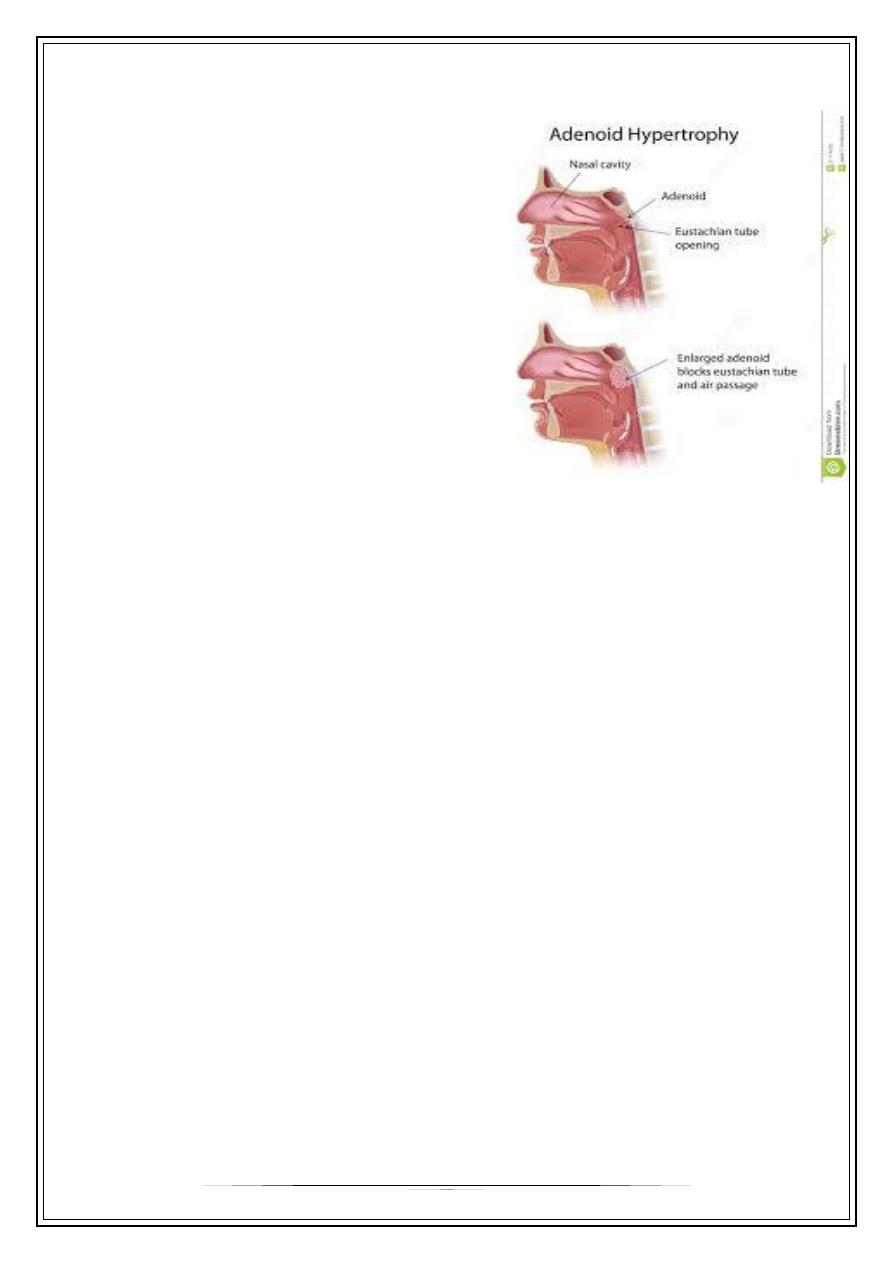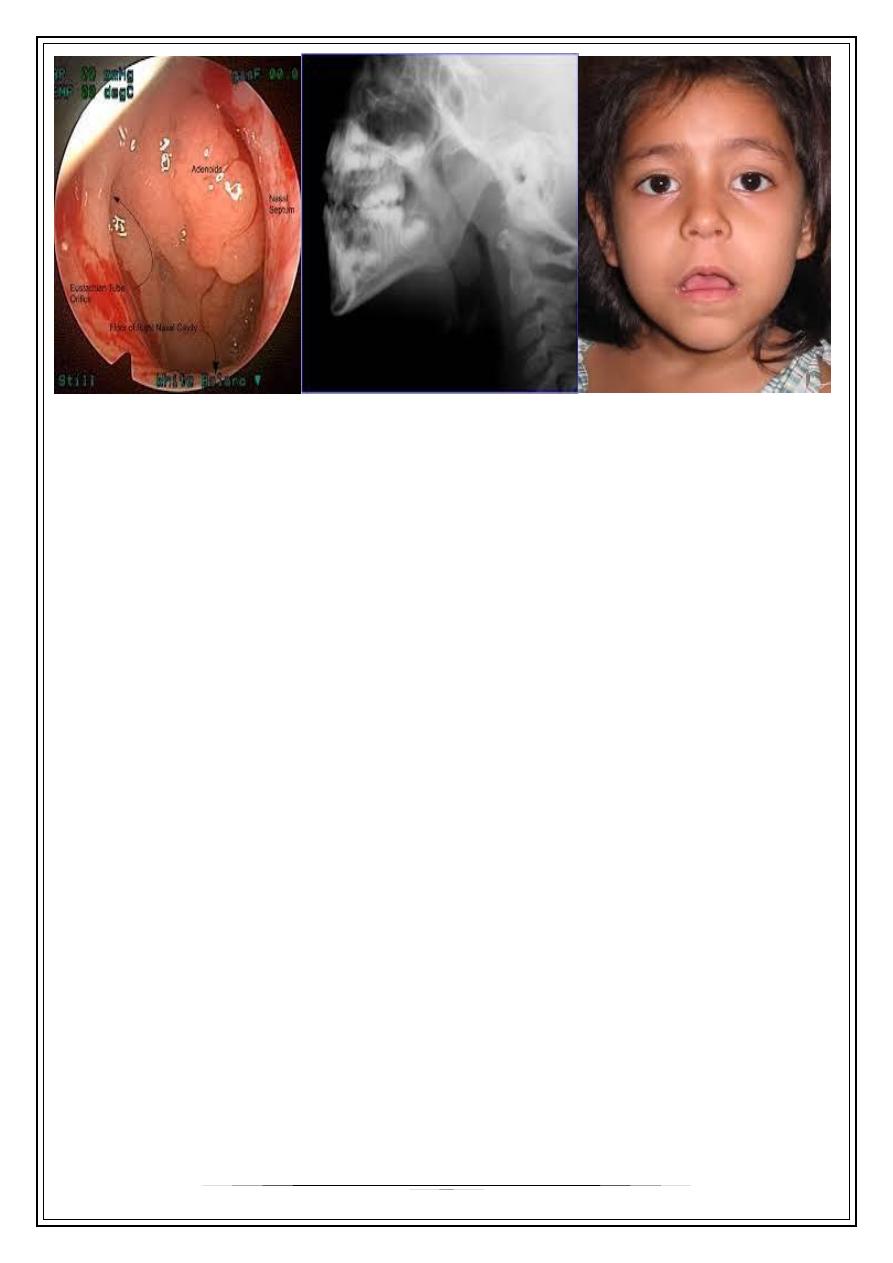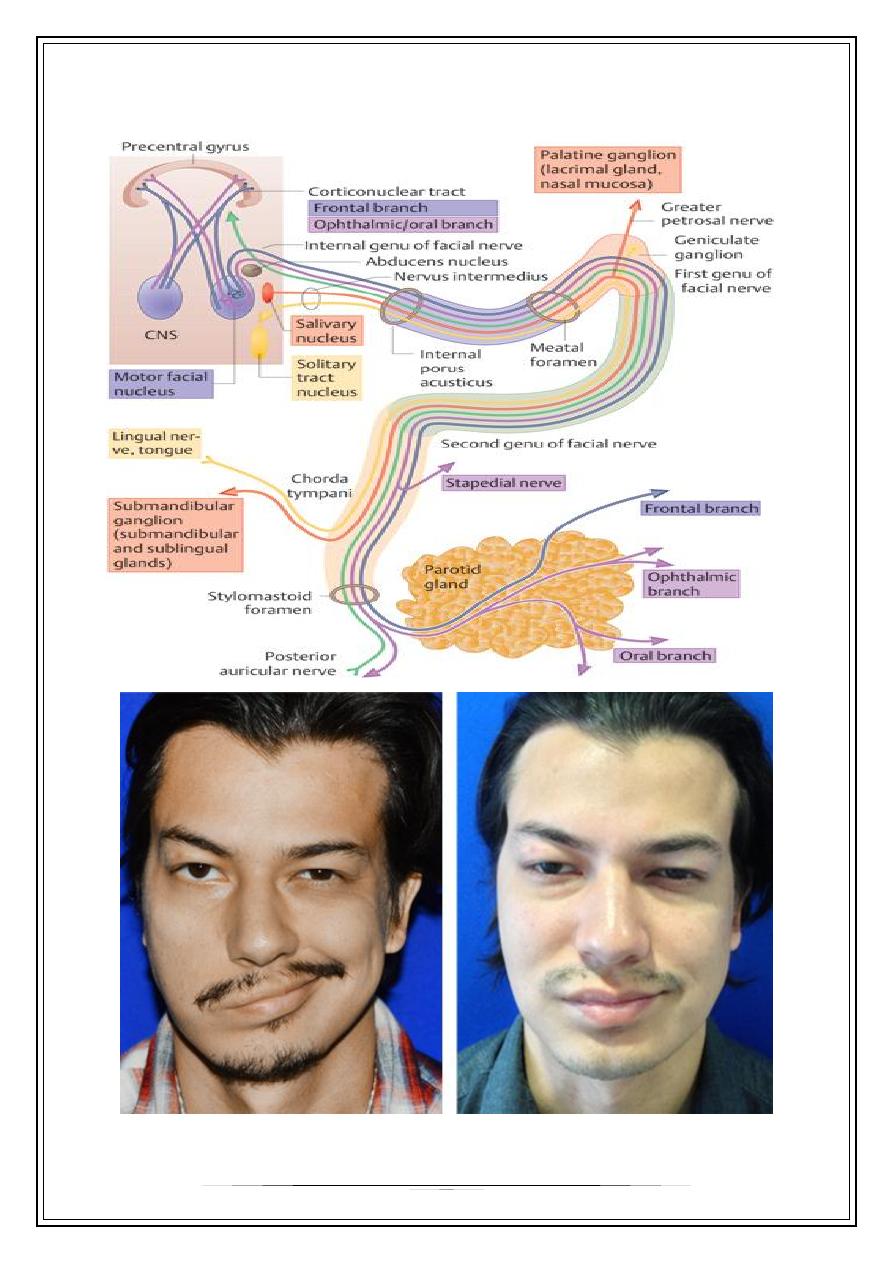
Fifth Stage
E.N.T
Dr. Mushtaq – Lecture 10
1
Adenoid
Hypertrophy of the nasopharyngeal tonsil
sufficient to produce symptoms .
- most commonly between 3 & 6 years.
- atrophy begins after 10 years / completes
before 20 years.
Symptoms &signs
A. Due to hypertrophy :
1. nasal obstruction causing :
a- mouth breathing
b- difficulty in eating
c- noisy breathing & eating
d- drooling
e- snoring
f- toneless voice
2. Eustachian tube obstruction:
a- deafness
b- Secretory o. m.
B. Due to inflammation:
1. nasal discharge & post nasal drip
( egg- white plug of mucus seen behind uvula on gagging is almost diagnostic) .
2. O.M.
3. rhinosinusitis
4. Cx. Lymphadenitis.
C. Generalized disturbances:
➢
mental dullness
➢
Apathy
➢
Nocturnal enuresis .

2
Diagnosis
•
Symptoms, signs & examination by postnasal mirror in quite young children .
•
X-ray of post nasal space .
•
Endoscope.
DDX. :
1) Other causes of nasal obstruction
▪
intrinsic rhinitis
▪
F.B.
▪
hypertrophy of posterior end of the inf. Turbinate.
▪
Nasal septal deviation .
▪
Congenital choanal atresia
▪
Sinusitis
▪
Antrochoanal polyp.
2) Orthodontoic abnormalities / high arch palate.
3) Thorn Waldt`s disease / cystic persistence of the median furrow of the n/ph tonsil.
Treatment
A- conservative / no marked symptoms & signs
- decongestant nasal drop
- fresh air breathing & postural exercise
- nose blowing training
B- adenoidectomy

3
Thank you,,,
Additions to lecture 9-Facial nerve:
